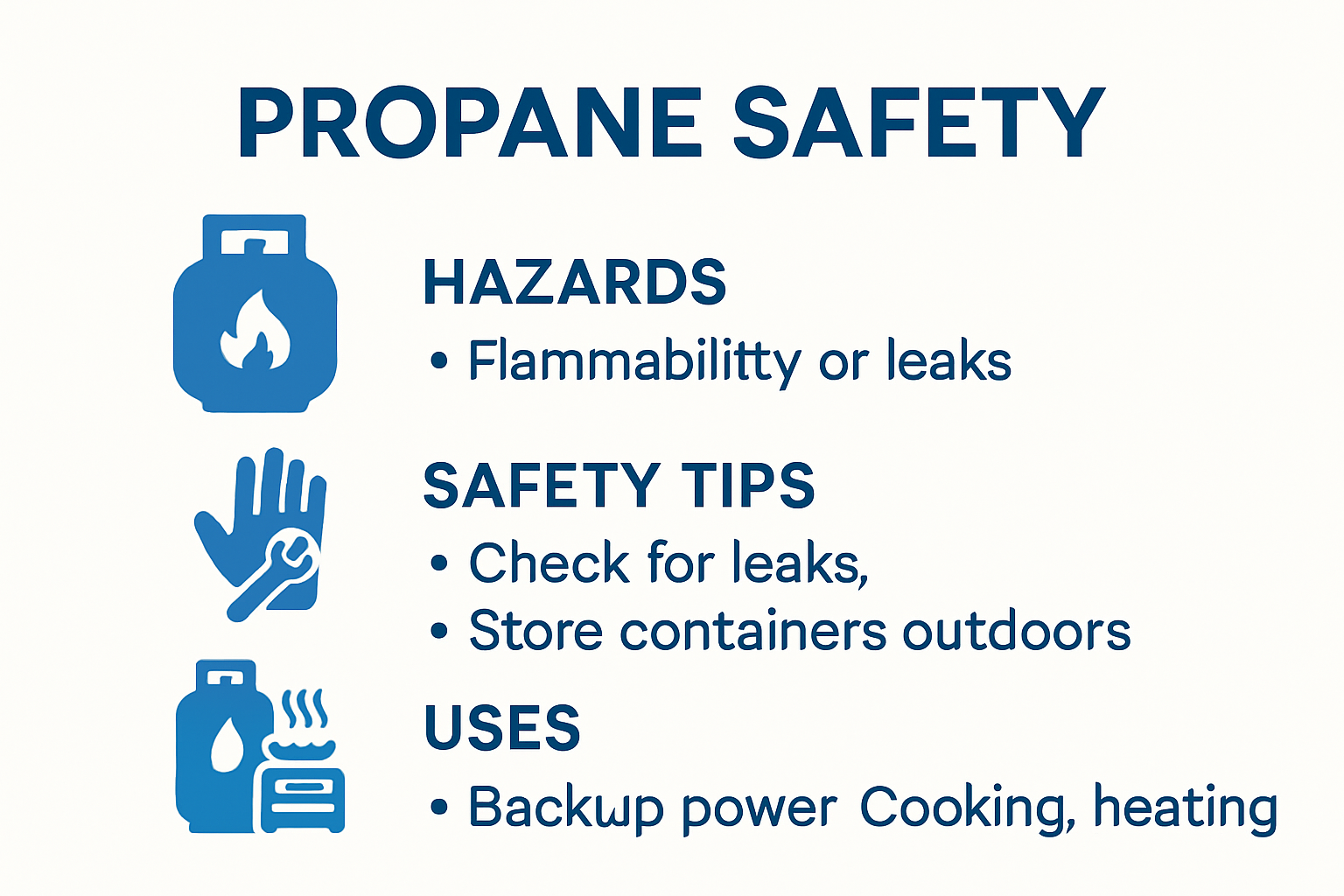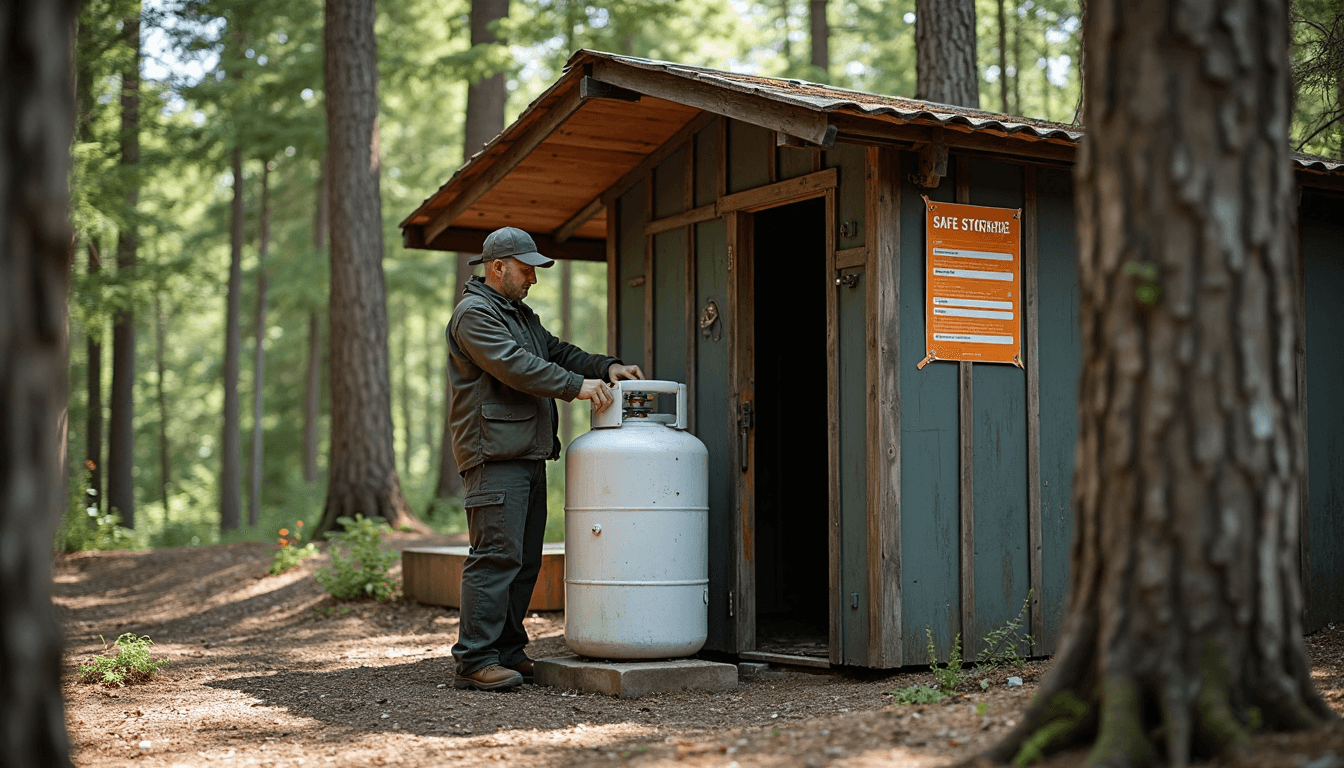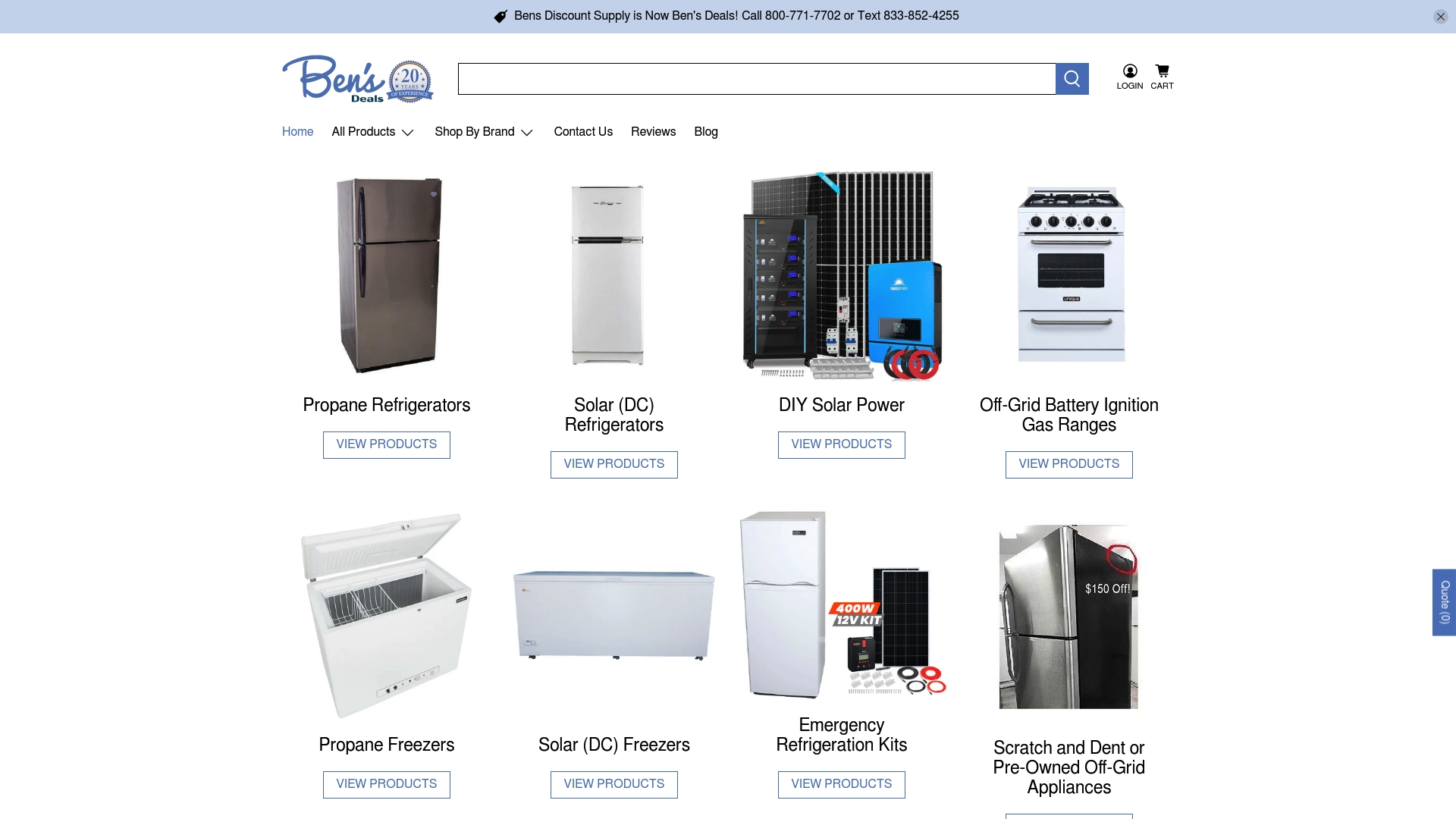
Propane Safety Tips for Off-Grid Living and Outdoor Use 2025

Propane powers everything from remote cabins to camp grills, but it hides some serious risks when used off the grid or outdoors. Here is something most people never think about. Propane can settle in low spots and create explosion dangers even at concentrations as low as 1 percent. That means simple mistakes like bad storage or poor ventilation can turn a weekend getaway into a nightmare. Discover why small actions—like a quick soap test or a better storage spot—could make all the difference between safety and disaster.
Table of Contents
- Understanding Propane Risks And Basic Safety
- Propane Storage And Handling For Outdoor Use
- Safe Installation And Maintenance For Off-Grid Systems
- Emergency Response And Leak Prevention Best Practices
Quick Summary
| Takeaway | Explanation |
|---|---|
| Understand Propane Risks | Recognize that propane is a highly combustible gas that can create life-threatening risks, especially in enclosed spaces with poor ventilation. |
| Regular Leak Detection | Conduct systematic inspections using soap solution tests on tank connections and ensure all components are secure to identify leaks quickly. |
| Ventilation is Critical | Always use propane-powered equipment in well-ventilated areas to prevent carbon monoxide buildup, and install detectors for safety. |
| Professional Installation is Key | Engage qualified professionals for propane system installation to ensure compliance with safety codes and effective system design. |
| Emergency Preparedness | Have a clear emergency response plan that includes evacuation procedures and contact information, while ensuring users are trained in safety protocols. |
Understanding Propane Risks and Basic Safety
Propane presents unique safety challenges that demand careful understanding and proactive management. This volatile fuel source offers incredible utility for off-grid living and outdoor applications but requires comprehensive knowledge to prevent potential hazards.
Chemical Properties and Potential Risks
Propane is a highly combustible hydrocarbon gas with distinctive characteristics that users must comprehend. According to the National Park Service, propane is heavier than air and can settle in low areas, creating significant explosion risks even at concentrations as low as 1%. This means that leaks or improper storage can quickly transform into life-threatening scenarios.
The gas’s molecular structure makes it particularly dangerous in enclosed spaces. When released, propane rapidly expands and displaces oxygen, potentially creating asphyxiation risks. Proper ventilation becomes critical when using propane-powered equipment, especially in confined environments like RVs, small cabins, or temporary shelters.

Safe Handling and Leak Detection
Detecting propane leaks requires systematic and regular inspection protocols. Propane safety experts recommend using a simple yet effective soap solution test on tank connections and valves. By applying soapy water to potential leak points, users can quickly identify escaping gas through bubble formation. Immediate action is crucial if bubbling occurs.
Key leak detection steps include:
- Conducting monthly visual inspections of propane tanks and connections
- Using soap solution to check for potential gas escapes
- Ensuring all connections are tight and free from corrosion
- Replacing damaged hoses or connections immediately
Ventilation and Carbon Monoxide Awareness
The United States Fire Administration emphasizes the critical importance of using propane appliances in well-ventilated areas to prevent carbon monoxide buildup. Carbon monoxide represents an invisible yet deadly threat that can accumulate rapidly in poorly ventilated spaces.
Off-grid users must implement robust ventilation strategies when using propane-powered equipment. This includes:
- Installing carbon monoxide detectors in living spaces
- Ensuring adequate airflow around propane appliances
- Never operating gas-powered equipment in sealed environments
- Maintaining clear space around heating and cooking devices
Understanding propane’s inherent risks transforms potential danger into manageable utility. By adopting systematic safety practices, off-grid enthusiasts can harness propane’s energy while minimizing potential hazards. Knowledge, vigilance, and respect for this powerful fuel source are the cornerstones of safe propane usage.
To clarify the primary steps involved in safe propane leak detection, the following table summarizes the key methods for identifying leaks as described above:
| Detection Step | Description |
|---|---|
| Visual Inspection | Check tanks and connections monthly for visible issues |
| Soap Solution Test | Apply soapy water to connections; bubbles indicate leaking gas |
| Tightness/Corrosion Check | Ensure all fittings are snug and corrosion-free |
| Immediate Replacement of Damaged Parts | Replace hoses/connections showing any damage |
Propane Storage and Handling for Outdoor Use

Outdoor propane storage demands precise strategies to ensure safety and optimal performance for off-grid enthusiasts, RV travelers, and outdoor adventurers. Understanding the nuanced requirements of propane handling protects both equipment and human life.
Optimal Storage Location and Environmental Considerations
According to the US Forest Service, indoor storage of propane cylinders presents significant risks due to potential gas accumulation in low areas. Outdoor storage becomes not just a recommendation but a critical safety protocol. When selecting an outdoor storage location, several key factors must be considered.
Ideal storage areas should be:
- Well-ventilated: Allow natural air circulation to prevent gas buildup
- Elevated: Place tanks on stable, level ground away from potential water pooling
- Shaded: Protect cylinders from direct sunlight and extreme temperature fluctuations
- Protected: Ensure tanks are sheltered from physical damage and direct environmental stress
Tank Positioning and Temperature Management
National Park Service research highlights that propane is heavier than air and can settle in low spots, creating explosion risks even at minimal concentrations. Strategic tank positioning becomes crucial in mitigating these potential hazards.
Key positioning guidelines include:
- Maintain a minimum distance of 10 feet from living structures
- Keep tanks upright and secured against potential tipping
- Avoid placing near potential ignition sources like electrical equipment
- Use protective covers during extreme weather conditions
Regular Maintenance and Inspection Protocols
Propane safety experts recommend implementing rigorous maintenance schedules to ensure long-term propane system reliability. Regular inspections can prevent potential leaks, corrosion, and performance degradation.
Comprehensive maintenance should encompass:
- Monthly visual inspections of tank exterior
- Checking for rust, dents, or structural compromise
- Verifying valve and connection integrity
- Testing pressure relief mechanisms
- Replacing damaged components immediately
Propane storage is not merely a technical requirement but a comprehensive safety strategy. By understanding environmental interactions, implementing strategic positioning, and maintaining consistent inspection protocols, outdoor propane users can transform potential risks into manageable, reliable energy solutions. Vigilance, knowledge, and proactive management are the ultimate guardians of safe propane usage in outdoor environments.
The following table outlines best practices for outdoor propane storage and handling, summarizing the guidelines given in this section for easy reference:
| Practice | Purpose | Key Actions |
|---|---|---|
| Outdoor Storage | Prevent indoor gas accumulation | Use well-ventilated, shaded, protected space |
| Elevated Positioning | Avoid water damage, improve ventilation | Place on stable, level ground |
| Safe Distance | Minimize risk to living spaces | 10+ feet from structures |
| Upright, Secured Tank | Prevent tipping and leaks | Use stands or secure devices |
| Regular Maintenance | Ensure integrity and performance | Monthly check, replace damaged parts |
Safe Installation and Maintenance for Off-Grid Systems
Off-grid propane systems require meticulous planning, professional expertise, and ongoing maintenance to ensure safe and reliable energy production. Understanding the complexities of installation and maintenance protocols protects both equipment and users from potential hazards.
Professional Installation Requirements
According to propane safety experts, professional installation represents the critical first step in establishing a secure off-grid propane system. Qualified technicians bring specialized knowledge that goes beyond basic technical skills, ensuring compliance with intricate safety codes and regulatory standards.
Key professional installation considerations include:
- Comprehensive system design matching specific off-grid requirements
- Precise equipment positioning and ventilation assessment
- Accurate pressure regulation and connection configurations
- Detailed documentation of installation specifications
- Verification of all safety mechanisms and emergency shut-off systems
System Maintenance and Regular Inspections
Research from industry safety guidelines emphasizes the importance of annual professional inspections for off-grid propane systems. These systematic evaluations detect potential vulnerabilities before they escalate into serious safety risks.
Comprehensive maintenance protocols should address:
- Annual professional system inspections
- Thorough equipment performance assessments
- Comprehensive leak detection procedures
- Calibration of pressure regulators and safety valves
- Replacement of worn or degraded components
Emergency Preparedness and Detection Strategies
Propane safety organizations recommend developing robust emergency response strategies. Recognizing potential warning signs and understanding immediate action protocols can prevent catastrophic incidents in off-grid environments.
Critical emergency preparedness steps include:
- Installing multiple carbon monoxide detectors
- Creating clear evacuation plans
- Maintaining emergency contact information
- Storing appropriate fire suppression equipment
- Training all system users in basic safety protocols
Off-grid propane systems demand a holistic approach to safety. By prioritizing professional installation, maintaining rigorous inspection schedules, and developing comprehensive emergency strategies, users can transform potential risks into manageable, reliable energy solutions. The intersection of technical expertise, systematic maintenance, and proactive safety consciousness ensures the long-term reliability of off-grid propane infrastructure.
Emergency Response and Leak Prevention Best Practices
Emergency preparedness represents a critical component of propane safety, requiring comprehensive understanding and systematic approaches to potential hazardous scenarios. Off-grid users must develop robust strategies that prioritize prevention, detection, and rapid response.
Identifying and Detecting Propane Leaks
According to propane safety experts, recognizing potential leak indicators is the first line of defense. Propane has a distinct odor deliberately added by manufacturers to help users identify gas escapes quickly. This rotten egg or sulfur-like smell serves as an immediate warning signal.
Key leak detection methods include:
- Conducting regular visual inspections of tank connections
- Using soap solution tests on potential leak points
- Installing propane leak detectors near equipment
- Training all system users to recognize distinctive odors
- Checking for unexpected vegetation changes near propane equipment
Emergency Response Protocols
University of Wisconsin Environmental Health and Safety guidelines emphasize the critical steps for responding to potential propane leaks. Immediate action can prevent catastrophic incidents and protect human life.
Comprehensive emergency response procedures should include:
- Immediate evacuation of the affected area
- Eliminating all potential ignition sources
- Avoiding electrical switches or electronic devices
- Calling emergency services from a safe distance
- Shutting off primary propane supply if safely possible
Preventative Maintenance Strategies
The Propane Council recommends implementing proactive maintenance protocols to minimize leak risks. Regular inspections and systematic checks form the foundation of effective leak prevention.
Critical preventative maintenance steps include:
- Conducting monthly equipment inspections
- Checking for signs of corrosion or damage
- Replacing worn hoses and connections
- Ensuring proper tank storage and positioning
- Maintaining accurate maintenance logs
Effective emergency response goes beyond reactive measures. It requires a comprehensive approach that combines technical knowledge, systematic monitoring, and rapid decision-making. By developing robust prevention strategies and understanding precise response protocols, off-grid propane users can transform potential risks into manageable safety scenarios. Knowledge, preparedness, and consistent vigilance remain the most powerful tools in preventing propane-related emergencies.
Frequently Asked Questions
What are the main risks associated with propane use for off-grid living?
Propane is highly combustible and can create explosion risks, especially in low-lying areas where gas can settle. It displaces oxygen in enclosed spaces, leading to asphyxiation hazards if not properly ventilated.
How can I detect propane leaks safely?
You can detect propane leaks by conducting regular visual inspections and using a soap solution test on tank connections. Applying soapy water will create bubbles if there’s a leak. Additionally, install propane leak detectors in living areas.
Why is ventilation important when using propane-powered equipment?
Ventilation is crucial to prevent carbon monoxide buildup, which is a colorless, odorless gas that can be deadly in poorly ventilated spaces. Always use propane appliances in well-ventilated areas to ensure safety.
What should I do in case of a propane leak emergency?
In case of a propane leak, immediately evacuate the area, avoid ignition sources, and do not use electrical devices. Call emergency services from a safe distance and turn off the propane supply if it’s safe to do so.
Ready to Make Your Propane Setup Safer and More Reliable?
If you are worried about propane leaks, ventilation, or the challenges of finding safe and energy-efficient off-grid appliances, you are not alone. The risks covered in this article are real—from gas settling in low spots to carbon monoxide hazards in closed spaces. Protecting your home, RV, or cabin begins with the right equipment and reliable parts. That is where Ben’s Deals steps in.

Shop our collection of off-grid propane appliances and accessories to get solutions proven to reduce propane safety risks. Explore user-friendly options like propane leak detectors, professionally-designed gas stoves, and energy-efficient solar refrigerators. Give yourself peace of mind with quality you can count on. Visit Ben’s Deals today and find everything you need for genuine off-grid and outdoor safety. Start building a safer, smarter setup right now by browsing our full selection of propane-powered appliances.
Recommended
- Crystal Cold CC21RNG Natural Gas All-Refrigerator (No Freezer Section) - Ben’s Deals
- DIAMOND ELITE Natural Gas Refrigerator-Freezer in Black 19 cu.ft. - Ben’s Deals
- Sun-Mar Compact Electric Medium Capacity Composting Toilet - Ben’s Deals
- Rich Solar 1200 Watt Solar Kit with Charge Controller, Solar Panels an - Ben’s Deals
- Summit 24" Wide Built-In Drawer Refrigerator FF1DSS24 - Ben’s Deals
- Unique Off-Grid 19 Cu. Ft. Propane Top Freezer Refrigerator In Stainle - Ben’s Deals


Leave a comment